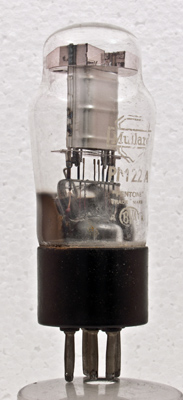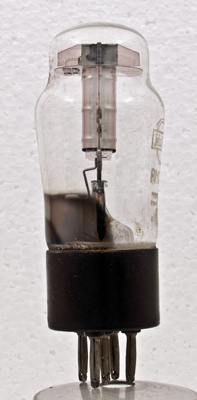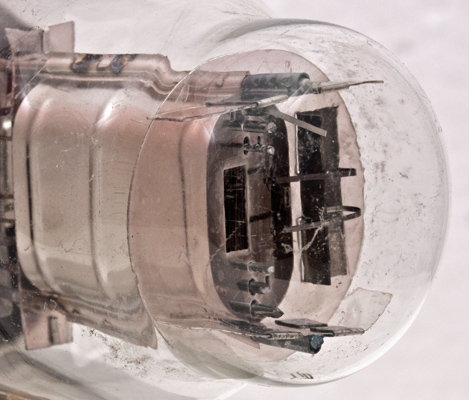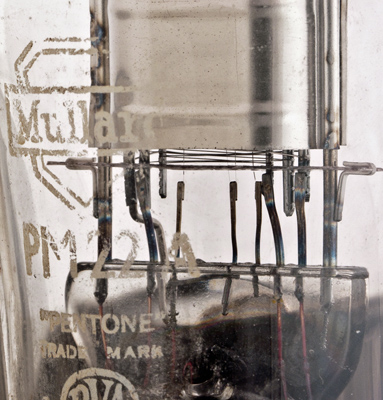The PM22A is a battery audio output valve for use in domestic broadcast receivers. It was made during the 1930s and features in the 1934-5 Mullard catalogue. The power output is low at 350 mW and so efficient loudspeakers were required to achieve an adequate listening volume. The output is lower than the PM22 but the filament power consumption was also less. Initially it was introduced as a B4 based valve with a side terminal, this was in 1932. The B5 based version was introduced in 1936.For correct operation the anode load should be 19,000 ohms.
Unlike our other PM22A this valve lacks the painted dome and just has lettering printed onto the envelope for identification. This suggests a later production, probably for replacement purposes.
This low power device only requires a bright anode. The shape is formed from pressed sheet.
The welds holding the anode to its supports can be seen clearly but through the top mica the grids and filament are less clear. Two long spring arms hold the tops of the two filament loops. The filament is oxide coated.
The envelope lettering and the pinch assembly. This is a true pentode with three wire grids - all visible in the picture. The 'Pentone' trade mark was dropped at some time post WWII so this could be a 1940s example of this Type.The classic envelope is 40 mm in diameter and, excluding the B5 base pins, is 94 mm tall.References: Data-sheet & 1043. Type PM22A was first introduced in 1931. See also 1931 adverts. |